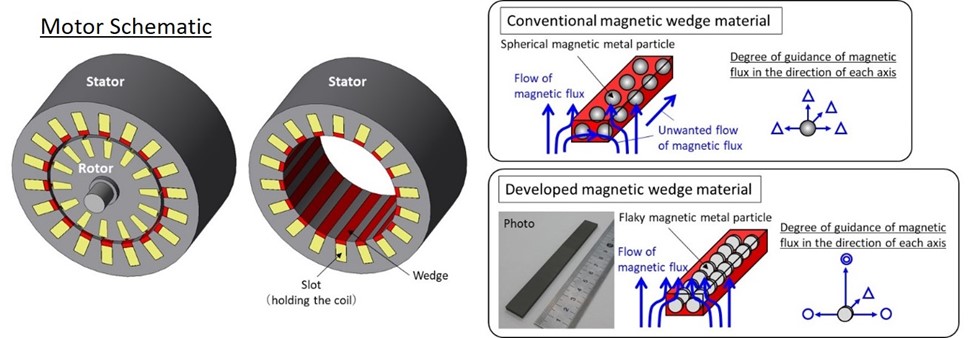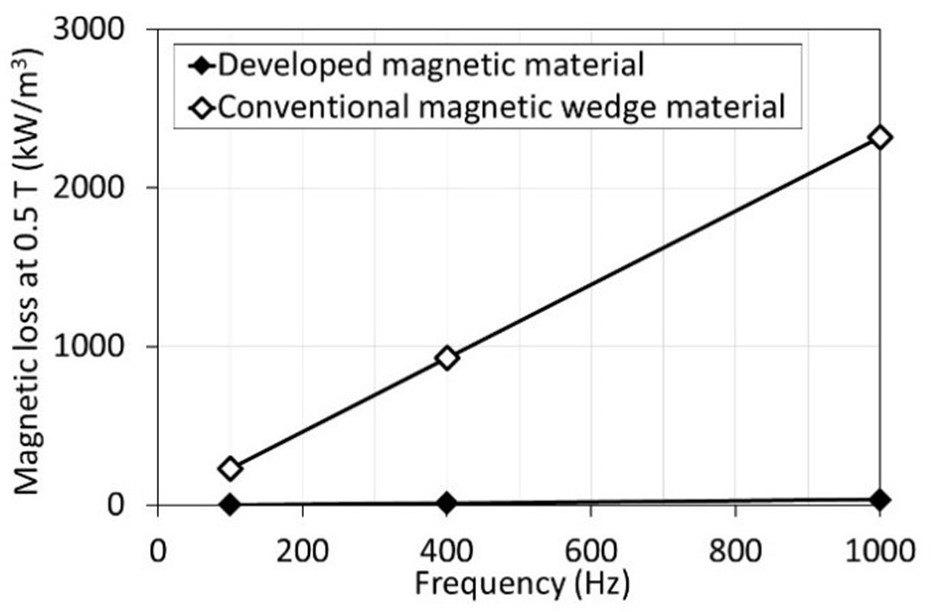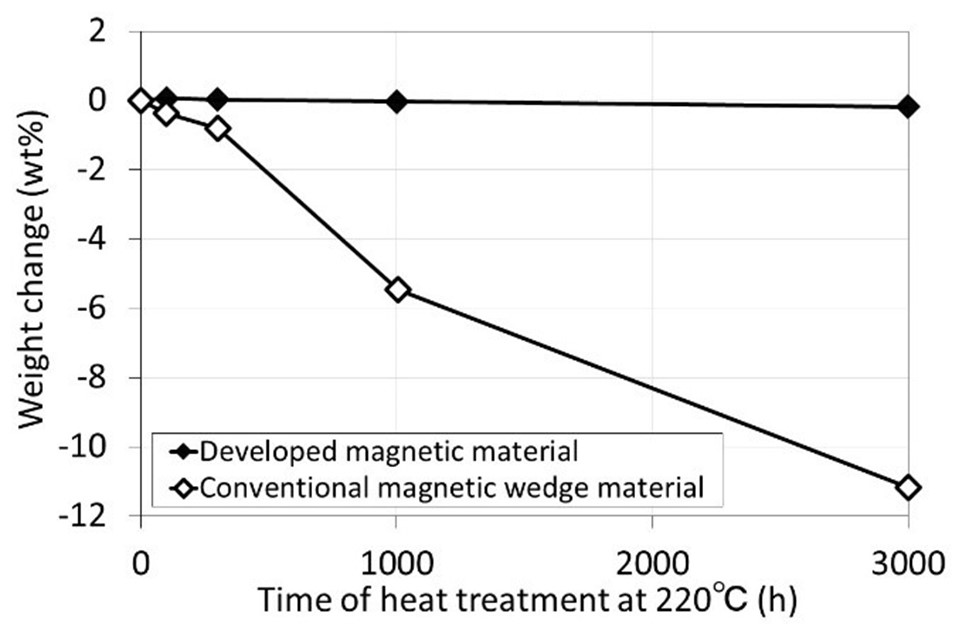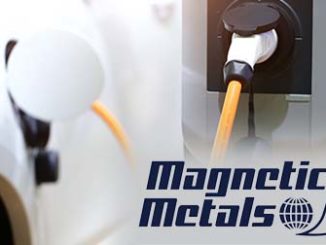
Researchers at Toshiba Corporation have developed a new magnetic material that delivers major improvements in motor efficiency at minimum cost, and with the potential to win significant reductions in power consumption. It has been found to greatly boost motor energy conversion efficiency when it is used as the wedges in the motor, particularly in medium to large induction motors. The material can be installed at minimal cost with no need for design changes.
Through testing in an induction motor in railway rolling stock drive systems, Toshiba confirmed an efficiency increase of 0.9 pt (“pt” is the measure for comparing motor efficiency. It indicates the difference in motor efficiency values) with an improvement approaching the efficiency of permanent magnet synchronous motors. The material can also be installed in permanent magnet synchronous motors to realize much higher efficiency.
The material also offers excellent heat resistance, suiting it for applications such as railway rolling stock, automobiles, robots, and industrial and medical equipment. If used in all motors operating worldwide today, with the same level of improvement in efficiency recorded by Toshiba, the material would allow the elimination of ten 1 GW power plants, estimates Toshiba.
Wedges in motor prevent motor coils from falling out of their slots. They are normally made of non-magnetic material, but the use of magnetic material has been found to guide magnetic flux toward the wedges, improving energy conversion efficiency. However, the conventional magnetic material used as the wedges is composed of spherical magnetic metal particles with insufficient control of the magnetic flux, causing leaks to the unwanted directions, as illustrated in Figure 1. The magnetic wedge material itself also has high magnetic loss. It also has low heat resistance, making it unsuitable for railway rolling stock and other applications that require high heat resistance.

The unique characteristics of the new magnetic material deliver excellent control of magnetic flux, ultra-low magnetic loss, and high heat resistance. The material is composed of flaky magnetic metal particles that have different magnetic property depending on the direction, and ultra-low magnetic loss (Figure 2). Used as a magnetic wedge, magnetic flux can be efficiently guided to the desired specific direction (Figure 1), reducing energy loss and significantly improving energy conversion efficiency.

Toshiba also found that compacting flaky magnetic particles with a heat-resistant binder heightens thermal stability, with barely any weight decrease, even when held in a hot, 220°C environment for a long period of time (Figure 3). This high heat resistance opens the way to widespread the range of application of the magnetic wedge. Toshiba targets commercializing high-efficiency railway rolling stock motors equipped with magnetic wedges by using the developed magnetic material. For more info, see www.toshiba.com.



